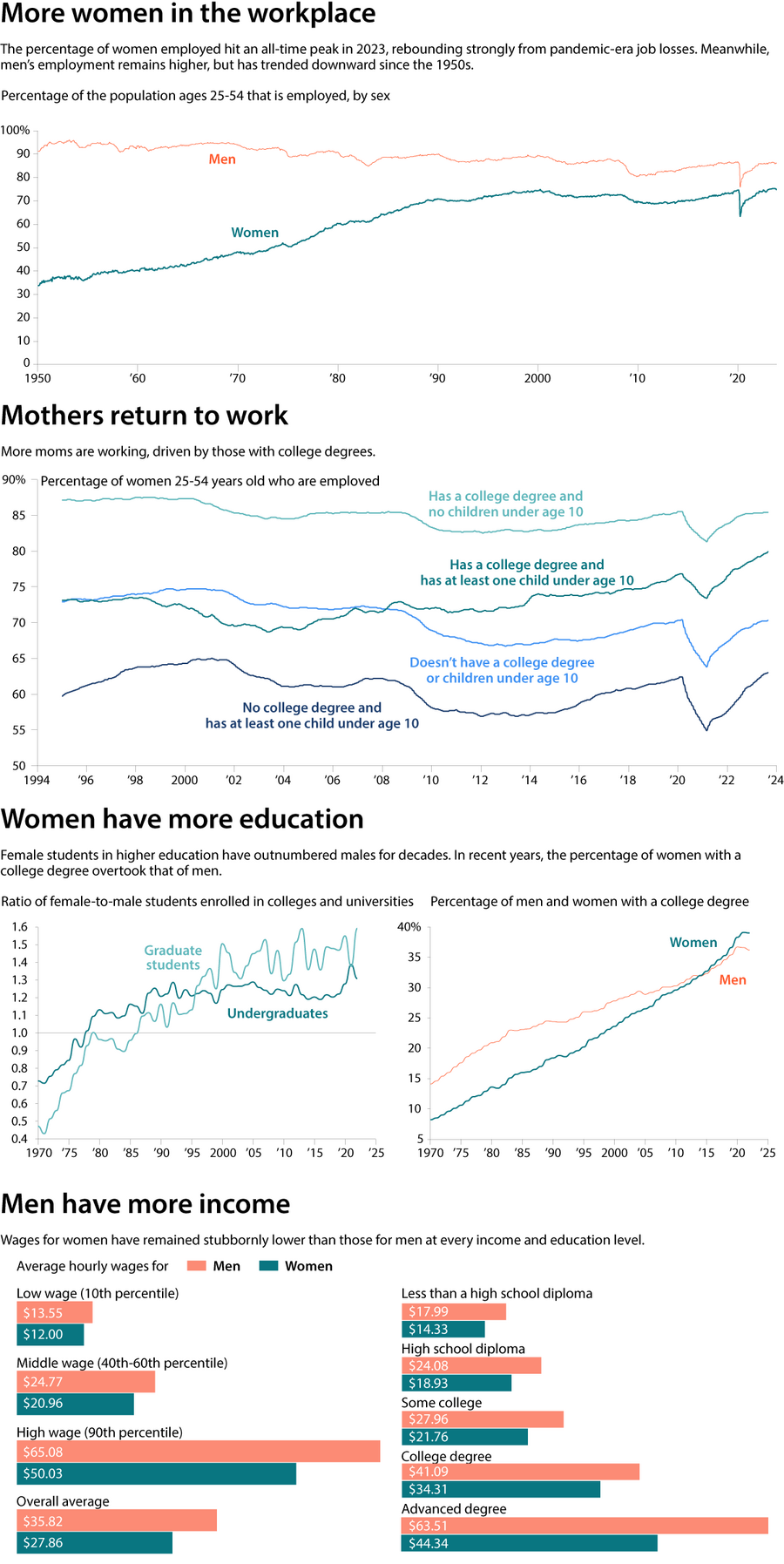In charts: How women’s employment hit a record high
Loading...
Women in the United States workforce hit a milestone in 2023, when the percentage of prime-age working women reached 75.3% – an all-time high. The main driver of this increase: college-educated women with young children.
“This is really about what happens when a woman who is working has their first child,” and if they drop out of the workforce and for how long, says Alexander Arnon, an analyst with the University of Pennsylvania’s Penn Wharton Budget Model who led a study of the data.
Women have outnumbered men in earning college degrees since the early 1980s. Yet the employment rate for women in the 25-to-54 age range still lagged behind that for men – and many economists expected them to have a slow post-pandemic return to work.
Why We Wrote This
A story focused onThe percentage of working women in the United States hit a record high in 2023 – defying expectations of a slow post-pandemic recovery.
So the recent trend is significant, as college-educated women with young children lead the way in employment growth.
Women still face employment challenges. The “child penalty” – the long-term effects of having children on women’s careers – persists. In 2022, men’s earnings averaged 18% more than women’s, a gap that shrank only 2 percentage points in 20 years. And women are twice as likely as men to hold part-time jobs, which often lack benefits and security. But part-time work is not driving the upward-trending employment rate, which is concentrated around relatively higher-paying professional jobs.
The increase in women’s employment is tied to workplace changes like telecommuting that accelerated during the pandemic, although the trend predates COVID-19. And it’s largely independent of economic cycles, which was a surprise to researchers, who note the broader economy has affected other subsets of working women. The consistent upward trend also defies experts’ expectations that women would bear a disproportionate share of the pandemic’s economic cost. In fact, the rate of prime-age working women recovered faster than men’s.
The rate of working mothers is expected to keep climbing. The impact of that shift is widely debated: How will it affect the long-term labor supply? Or men and families?
On whether it’s good for the economy, Mr. Arnon says there’s no question. “If you think that having more productive capacity is a positive ... this is a positive for the U.S. economy.”








